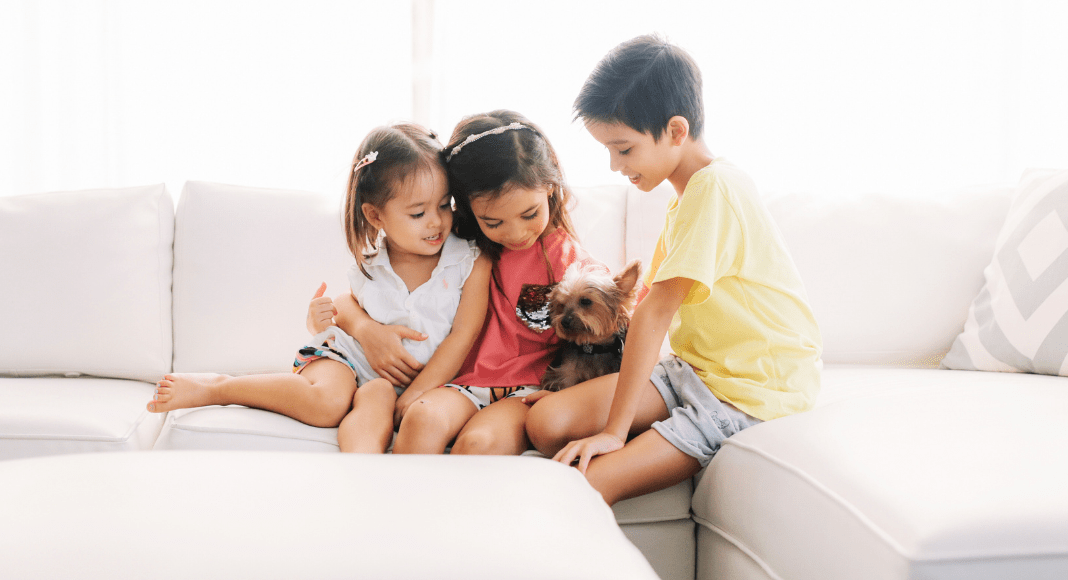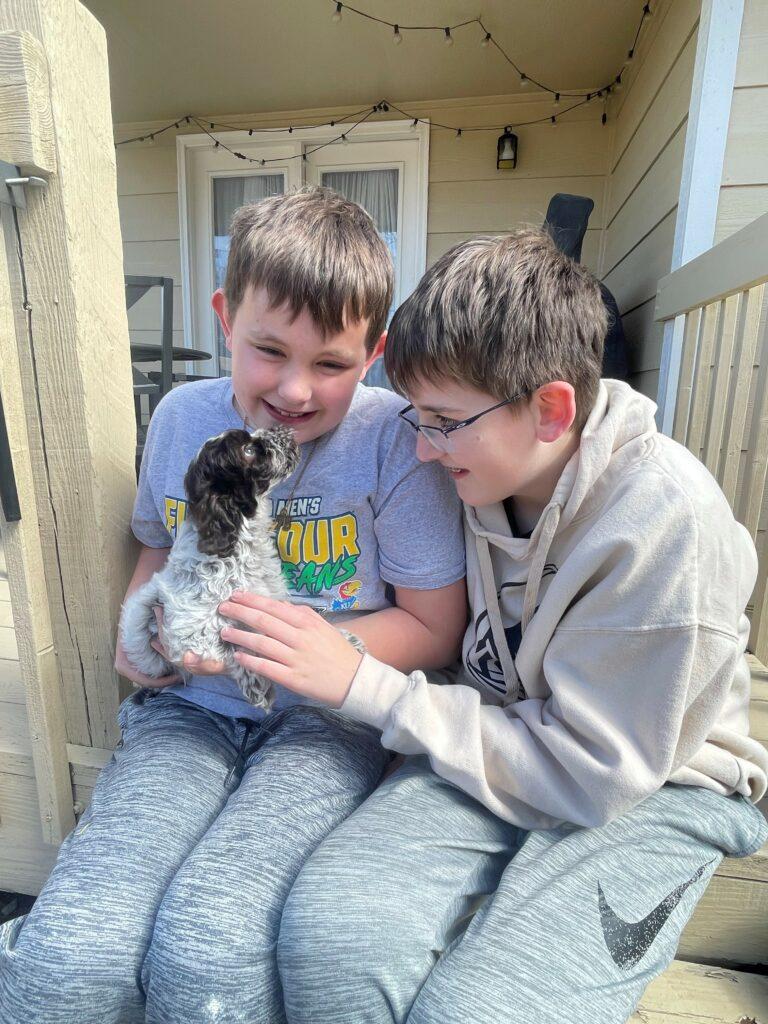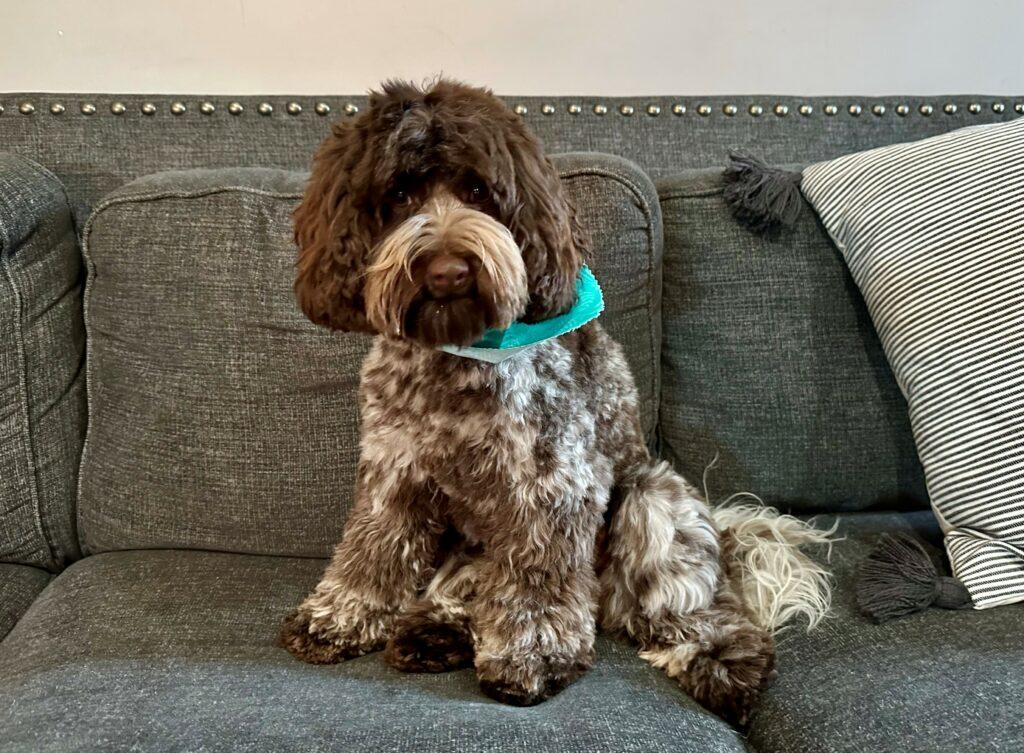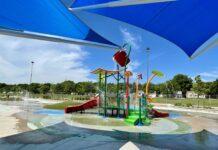
My children started asking for a dog a couple of years ago. We consistently said “no.” When my oldest was almost 11, he said the only thing he wanted for his birthday and Christmas (which are a month apart) was a dog. We discussed his reasons why. He was pretty compelling in his reasons: have more responsibilities, always have a buddy, and to be active with him. My husband and I felt like the newness might wear off of the idea of getting a dog, so we told him we were going to wait a year to determine if he could demonstrate that he could show some initiative in being responsible around the house before we took the plunge and became dog owners.
I’m a research person, and wanted to make sure that our busy family could handle all of the responsibilities and expenses. I’d discovered, that when adolescents have a pet, especially one in which they grow up together, it teaches them empathy, reduces loneliness, and improves mental and emotional health. We decided that the benefits outweighed the sacrifices, and started researching the pet we wanted.
These are the things we discussed when we decided which dog we wanted:
Adoption vs. Buying from a Breeder
We looked at local adoption groups and local breeders. There are many benefits about adopting, it’s much cheaper and you’re providing a home to a dog that might not otherwise have one. However, we ended up deciding to purchase a dog from a local breeder after we vetted them and determined that we felt more comfortable knowing the dog came from a reputable source and had been exposed to a variety of sensory experiences.
If you’re looking to foster or adopt, we recommend these Wichita organizations!
Type of Breed
We discussed the pros and cons of getting a shedding or a non-shedding dog. We don’t have anyone in our small family with pet allergies, but we do have some extended family members with dog allergies. We decided that a non-shedding dog would be the right fit for our family. The challenge with non-shedding dogs is that grooming and brushing becomes very important on a regular basis and it can be very time consuming and expensive. We ended up getting a doodle, and he requires grooming appointments every 6 weeks and brushing 3-4 times a week. We also considered the activity level. We wanted a dog that was moderate energy level. We like to be active and wanted a dog that would want to as well, but could relax and rest at home as well.

Size of Dog
My son originally wanted a larger dog, but we decided that we wanted a dog that was on the smaller side. Since we purchased a dog from a breeder, we had a pretty good guess about the potential adult size. We love to entertain at our house, and we decided that a really large dog, or a really small dog could be a tripping hazard. Smaller dogs tend to be less expensive for veterinary bills, food expenses, and pet insurance. We didn’t want a dog that could counter surf, and felt like a smaller dog might be less destructive on the yard and house.
House Training
Since my husband and I both work full time and have busy days, we discussed at length the time of year that would work best for us to be available to house train our dog. We decided that purchasing the dog just before Spring Break was a perfect time as we would be home for a week and able to be attentive for longer periods of time. The commonly accepted time for a dog to be crated during the day is the number of months plus one is the number of hours at most that they could be crated at a time. Our pup was 9 weeks when we brought him home, and it wasn’t an option for us to come home every 3 hours, so we decided to purchase a toddler play yard for our living room, and set it up with a crate area, play area, little bed, and potty pad. The most important thing to do is to purchase a cleaner that removes the urine smell if your dog does potty inside so that it won’t think it is an acceptable place to go. We started with a bell right away for him to ring when he needed to go outside. He picked it up pretty quickly, and was ringing the bell when he needed to go (or wanted to go) outside by 12-14 weeks.
Training and Socialization
Before we brought our dog home, we searched for a dog training class for our family to attend. We went to a class before we every brought him home to make sure we were prepared from the very beginning. We learned very helpful techniques in establishing helpful routines and managing challenging behaviors. We decided that after the training classes were over, we wanted to continue to encourage socialization through weekly days at doggie daycare, but socialization could definitely occur with friends with pet play time.
Managing Expectations
We discussed our expectations with our children about their contributions to care for the dog. It was pretty fun and exciting at first, but the newness wore off pretty quickly. Our family of four has all settled in to our roles with the dog. We all bear part of the responsibility of walking, cleaning up after, playing with, and caring for the dog. It is not realistic that kids can be the primary caregivers, so if the adults in the home are not willing to make sure all of the needs are met, it’s best not to get a dog.
Ongoing Expenses
Pets can be very expensive. Monthly heartworm, flea and tick medications, and regular veterinarian visits can add up. Food and treats can be expensive if your pet is finicky or develops allergies. Pet insurance can be pricy, but if your dog is a chewer or develops an illness, it can be helpful in minimizing the out of pocket expense. Grooming appointments, especially for long haired dogs can really add up. Doggie daycare and boarding can be pricy as well.
Pets are Destructive
We recognized that pets can be very destructive on houses. Our carpet was well over a decade old, and ready for replacement, so we decided that it would be a good time to get a puppy and we would replace the flooring in the year or two after we got a dog. Furniture can also get chewed on, so we found some No-Chew spray that is furniture safe that can stop dogs from chewing. We are pretty attentive to our dog, but he has still been able to chew off the zipper pull of most of the couch cushions. Our dog acts likes a naughty toddler and when he wants our attention, he will jump on the couch and start chewing on cushions, all while watching for our reactions. I keep the No-Chew spray handy to reapply.

Our dog has changed our pace of life. We are a busy family with lots of activities and long days of sports, but knowing our Rufus is at home waiting for us has encouraged us to reduce time out and about and increase time at home. Now that he is a year old, he still has plenty of puppy energy, but has been trained to settle down when he needs to. He’s always willing to get scratches behind the ears, and give kisses. He has a sweet bond with each person in our family and provides us with lots of love.














